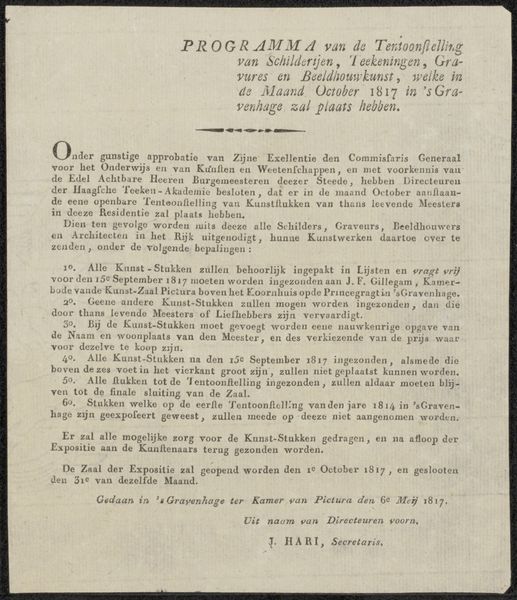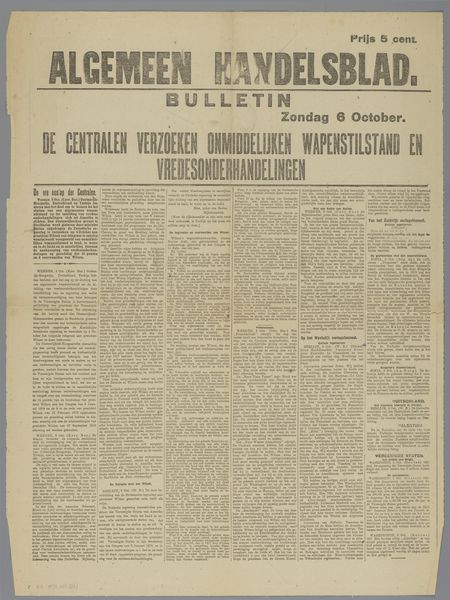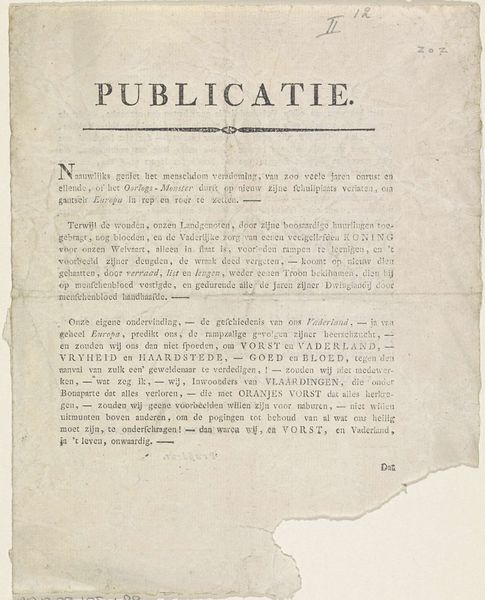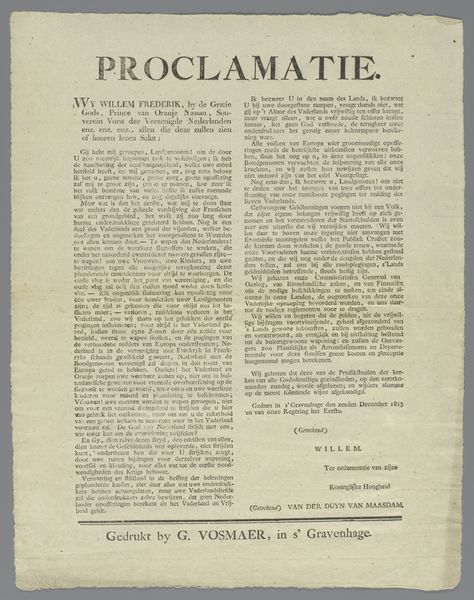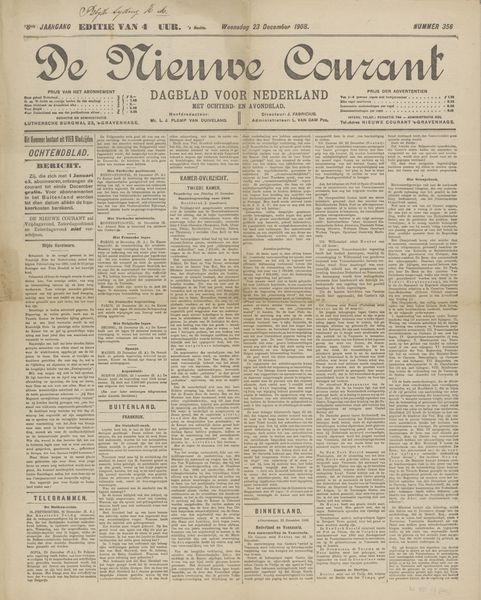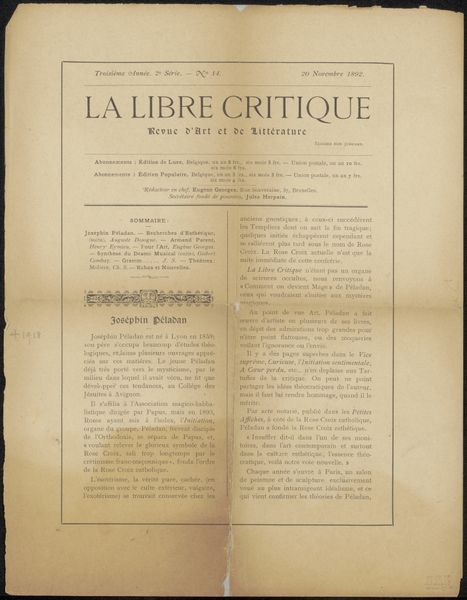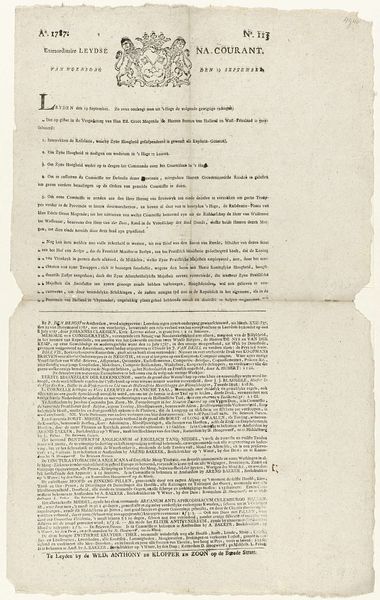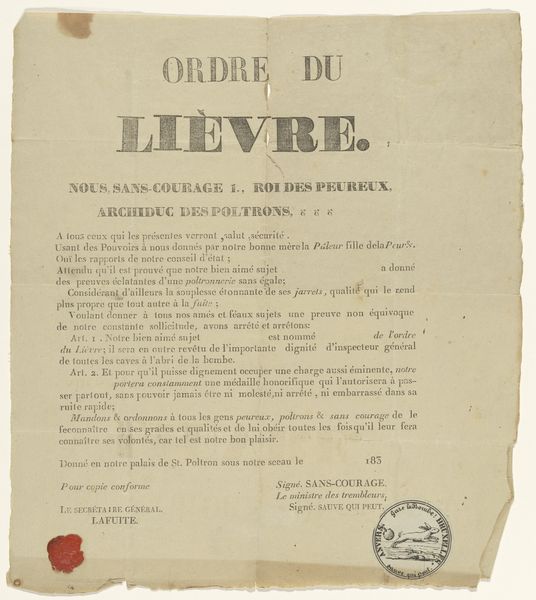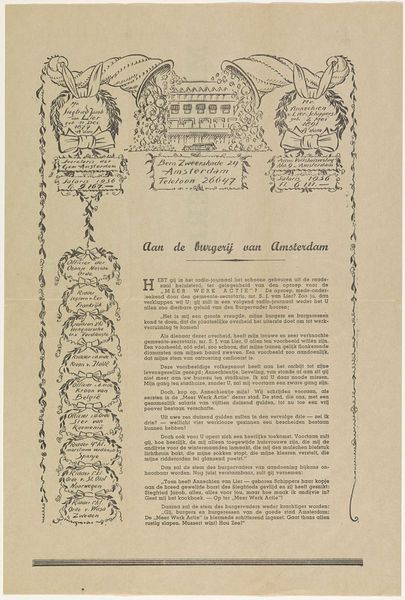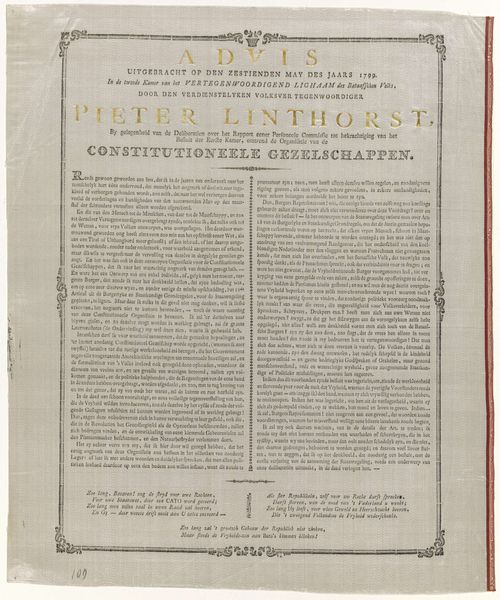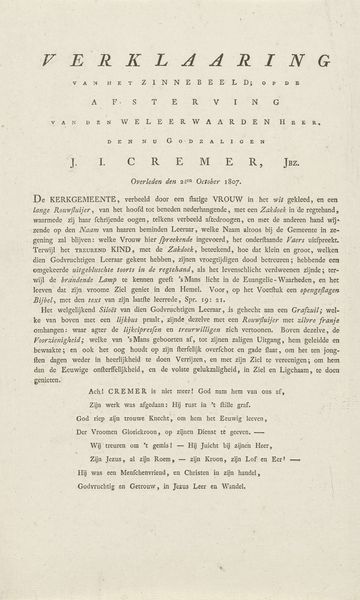
Uitgeversprospectus voor de Code judiciaire de la République française 1797 - 1798
print, typography
script typeface
neoclacissism
sand serif
typeface
hand drawn type
typeface variation
typography
stylized text
thick font
handwritten font
classical type
historical font
Dimensions: height 540 mm, width 425 mm
Copyright: Rijks Museum: Open Domain
Curator: Here we have "Uitgeversprospectus voor de Code judiciaire de la République française," a print from around 1797-1798, by the widow of Coste Belle. It’s essentially a publisher’s prospectus for the French Republic’s legal code. Editor: My first impression is of formal chaos. It looks like an attempt to impose order—judging by the title—but visually it feels very busy, almost overwhelming. There are so many typefaces vying for attention on a single page! Curator: Exactly! It reflects a moment of intense social and political restructuring. Think of it as a battleground for different aesthetic ideologies reflecting power struggles. The neoclassical type hints at the desire for a return to classical order and the republican ideals associated with that time. Editor: But the materiality argues against that clean narrative. The inconsistent inking and varied letterforms tell me this wasn’t just about clean lines. The printing process itself, likely involving manual typesetting and printing, highlights the labor involved in disseminating these laws and ideologies. We’re dealing with real bodies, real skills here, not just abstract ideas. Curator: Precisely, this object testifies to how printed materials were instrumental in shaping public opinion and disseminating legal knowledge during the revolutionary period. These aren't just laws; they're marketing them, framing them for the masses! Look at the language used – appealing to ideas of national unity, justice, a break from what came before. Editor: It's a testament to the period’s ambitions and the challenges of realizing those ambitions. Disseminating ideas through mass production, that too comes with its own set of contradictions. Think of the wood, metal, paper – the physical realities behind these supposed ideals. Curator: Seeing it through your eyes reminds us that even tools designed for the common good bear the fingerprints of those who make them and the societal pressures they faced. Editor: And, perhaps more broadly, that materiality always mediates ideology.
Comments
No comments
Be the first to comment and join the conversation on the ultimate creative platform.
